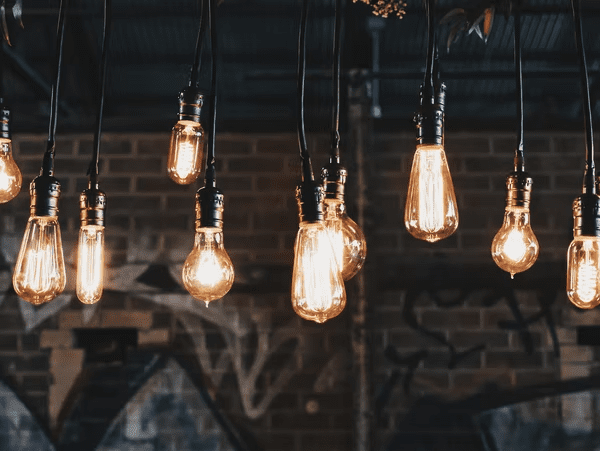6 Tips That Will Help You Choose the Perfect Lighting For Your Home
The right lighting can give your house a completely new and creative look. But when it comes to home lighting design, many of us view light fixtures as decorative accents rather than vital components of a room. Lighting doesn’t have to be the first thing on your design checklist, but it also shouldn’t come last. Your decisions affect both the functionality and ambiance of a space, from opulent chandeliers to the most understated accent lights. To do it right, you must conduct a thorough study before making any judgments on the design of your home’s lighting, and you must be clear about the goals of each fixture and light bulb you choose. We’ve collected six of our top house lighting suggestions in one spot to help remove some of the guesswork from the process. Learn all you need to know about the fundamentals of choosing lighting that matches your area and provides you with the utmost in usefulness and functionality by reading on.
Consider Different Types of Lightbulbs
There are four main and most popular options for choosing lightbulbs:
Light-Emitting Diode (LED)
It generates strong light, produces no heat, and is one of the most energy-efficient varieties of lightbulbs. They work well in difficult-to-reach areas and have a long lifespan (up to 50,000 hours). Also, LED lights are ideal for big spaces outside of your home, such as pools, baseball fields, tennis courts, etc. They are excellent for task lighting since they cast directed light. Some lighting fixtures are referred to as “integrated LED” because they have LED lights incorporated right into them.
Incandescent
These are the most popular and typically least priced types of bulbs. They emit warm light, they work with dimmers, and they often last up to a year. Additionally, they are less energy-efficient than other kinds of light bulbs.
Compact Fluorescent (CFL)
Depending on the model you select, these energy-saving lights may produce a variety of colors. Often, it takes some time for them to warm up and become brighter. Use them to light up places with a lot of space, such as basements, big rooms, and kitchens. Because these light bulbs contain mercury, handling them should be done with caution. They may be recycled once they’ve burned out.
Halogen
These lights provide a white light that resembles midday sunlight. They are excellent for downlights, hanging lights, and under cabinet lighting since they are dimmable and energy-efficient. The lifetime of this lightbulb is the shortest of the other three. They should be kept away from items that might catch fire, though, since they heat up fast. Additionally, we advise wearing gloves when changing the bulb because the oil on your hands might cause the bulb to blow up if it gets too hot.
Find a Lighting Focal Point
Chandeliers, lamps, and sconces in your house shouldn’t all be the same size. Otherwise, the eye wanders aimlessly while searching for visual clarity. A chandelier is a wonderful focal point for a large room, such as a dining room or family room. Consider a standout floor lamp or wall sconces with an antique feel for a space on a smaller scale.
Be Creative
The key to effective home lighting is creativity and thinking outside the box. Only a tiny part of the lighting consists of portable lights and overhead fixtures. Accent lighting and effective task lighting may offer a unique touch and a startling radiance to your house. Some of our favorite creative lighting solutions include hanging a chandelier at the bedside or adorning bookcases with small lights to highlight decorative items like artwork.
Switch to Energy-Efficient Light Bulbs
Designing your house to be energy efficient is essential, and thankfully, it’s simple to adapt to just about any fixture. When feasible, stick with LEDs because they have a considerably longer lifespan than other types of bulbs. Consider paying a little bit more upfront for bulbs that last longer to operate in order to save money later on by switching to more energy-efficient lighting.
Layering
It’s crucial to think in layers when it comes to lighting. To achieve the most aesthetically pleasing balance, aim for a minimum of three light sources in each location, including the restroom or entryway. Low-power bulbs can be used to illuminate small areas. Don’t overlook the accent layer, though, since it acts as a visible reminder of the additional work you put into completing your rooms. Always consider wall décor while arranging various installation lighting types.
Heat Lamps for Bathrooms
Heat lamps are an excellent way to keep your bathroom warm while also lighting it up and fostering a cozy atmosphere. This is perfect since, during the winter, bathrooms are among the coldest rooms in the house. You want a soothing, cozy bathroom environment, whether you get up in the morning or take a shower before bed. Bathroom heat lights offer both light and immediate heat.
Home lighting is not difficult, but perfecting it may take some time. Start off small and gradually add more as you identify the areas of your home that lack lighting and those where it would have the most impact.





